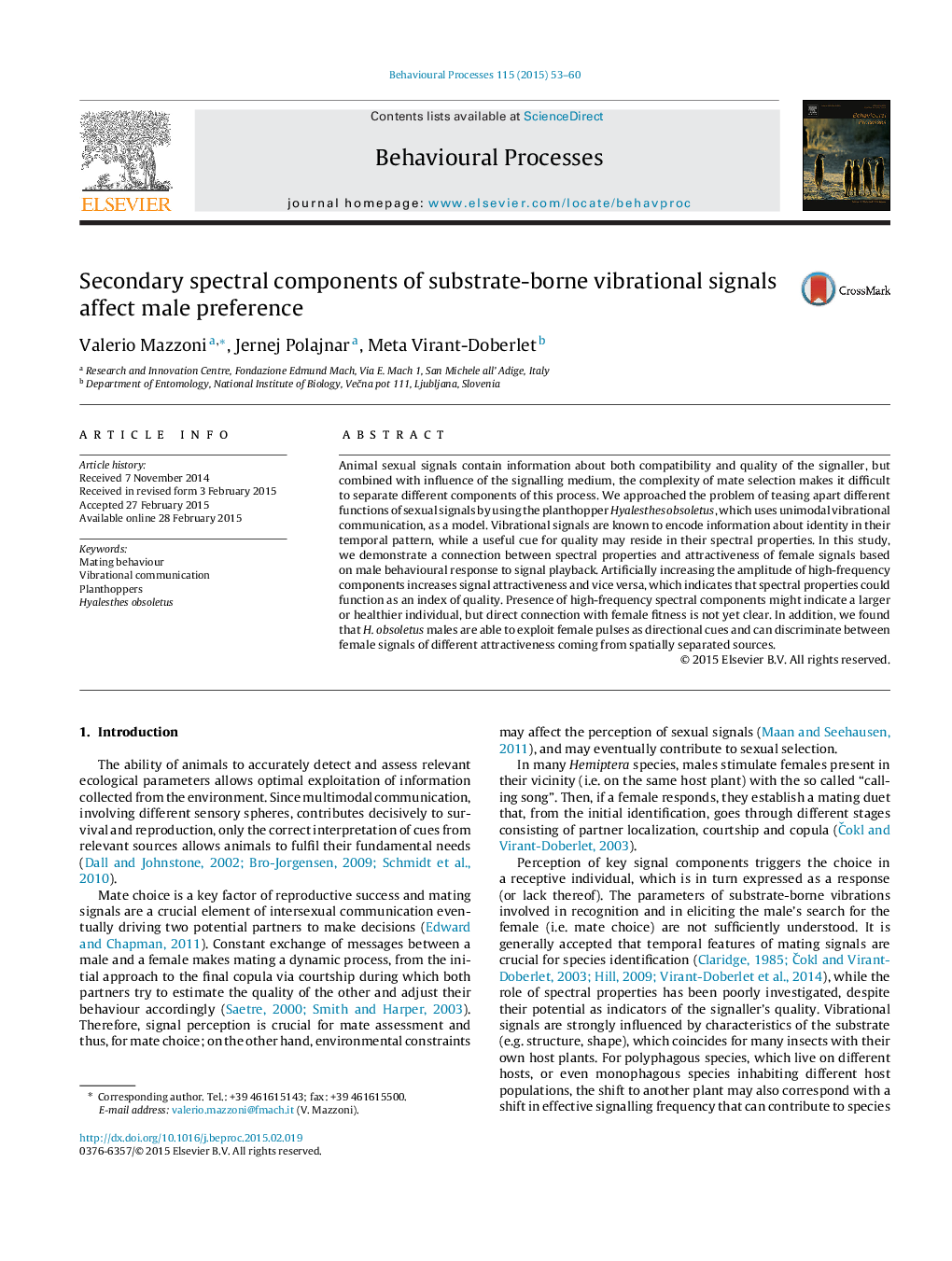| کد مقاله | کد نشریه | سال انتشار | مقاله انگلیسی | نسخه تمام متن |
|---|---|---|---|---|
| 2426590 | 1553165 | 2015 | 8 صفحه PDF | دانلود رایگان |
• Attractiveness of Hyalesthes obsoletus females to males is associated with high-frequency components of their mating signals.
• Manipulation of spectral properties significantly affects signal attractiveness.
• Males reliably locate the preferred signal source in two-choice situations.
• Spectral properties may serve as an index of mate quality.
Animal sexual signals contain information about both compatibility and quality of the signaller, but combined with influence of the signalling medium, the complexity of mate selection makes it difficult to separate different components of this process. We approached the problem of teasing apart different functions of sexual signals by using the planthopper Hyalesthes obsoletus, which uses unimodal vibrational communication, as a model. Vibrational signals are known to encode information about identity in their temporal pattern, while a useful cue for quality may reside in their spectral properties. In this study, we demonstrate a connection between spectral properties and attractiveness of female signals based on male behavioural response to signal playback. Artificially increasing the amplitude of high-frequency components increases signal attractiveness and vice versa, which indicates that spectral properties could function as an index of quality. Presence of high-frequency spectral components might indicate a larger or healthier individual, but direct connection with female fitness is not yet clear. In addition, we found that H. obsoletus males are able to exploit female pulses as directional cues and can discriminate between female signals of different attractiveness coming from spatially separated sources.
Journal: Behavioural Processes - Volume 115, June 2015, Pages 53–60
